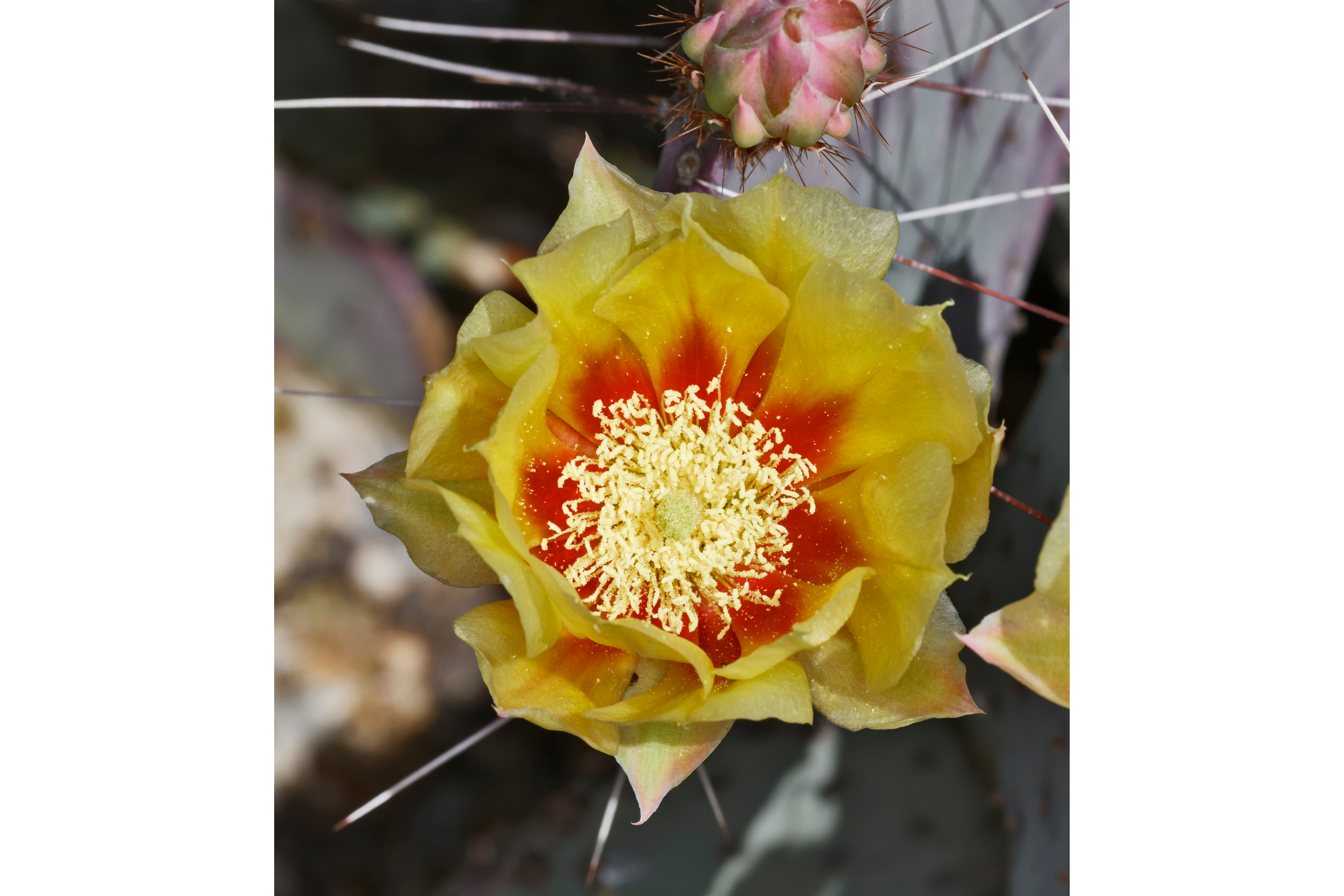Plains Pricklypear
(Opuntia macrorhiza)

Description
Opuntia macrorhiza is a common and widespread species of cactus with the common names Plains Pricklypear or Prairie Pricklypear or Western Pricklypear. It is found throughout the Great Plains of the United States, from Texas to Minnesota, and west into the Rocky Mountain states to New Mexico, Utah, and perhaps Idaho, with sporadic populations in the Mississippi and Ohio Valleys. It is also reported from northern Mexico in the states of Chihuahua, Sonora, Coahuila, Nuevo León, Durango, Tamaulipas, and San Luís Potosí., though all Arizona and Mexican records should be considered with caution due to confusion with other similar species. The species is cultivated as an ornamental in other locations. The species prefers well-drained, sandy or gravelly soils, mostly in grassland areas. It is one of the shorter species of the genus, rarely over 30 cm (1 foot) tall, spreading horizontally and forming wide clumps. Flowers are showy and bright yellow, often with red markings near the base of the petals. Fruits are narrow, red, juicy and edible. Several varieties have proposed within the species. More study is needed to determine whether these should continue to be recognized as varieties, elevated to species status, or regarded as mere synonyms. Opuntia, commonly called prickly pear or pear cactus, is a genus of flowering plants in the cactus family Cactaceae. Prickly pears are also known as tuna (fruit), sabra, nopal (paddle, plural nopales) from the Nahuatl word nōpalli for the pads, or nostle, from the Nahuatl word nōchtli for the fruit; or paddle cactus. The genus is named for the Ancient Greek city of Opus, where, according to Theophrastus, an edible plant grew and could be propagated by rooting its leaves. The most common culinary species is the Indian fig opuntia (O. ficus-indica). O. ficus-indica is a large, trunk-forming, segmented cactus that may grow to 5–7 m (16–23 ft) with a crown of over 3 m (10 ft) in diameter and a trunk diameter of 1 m (1 yd). Cladodes (large pads) are green to blue-green, bearing few spines up to 2.5 cm (1 in) or may be spineless. Prickly pears typically grow with flat, rounded cladodes (also called platyclades) containing large, smooth, fixed spines and small, hairlike prickles called glochids that readily adhere to skin or hair, then detach from the plant. The flowers are typically large, axillary, solitary, bisexual, and epiperigynous, with a perianth consisting of distinct, spirally arranged tepals and a hypanthium.
Taxonomic tree:







